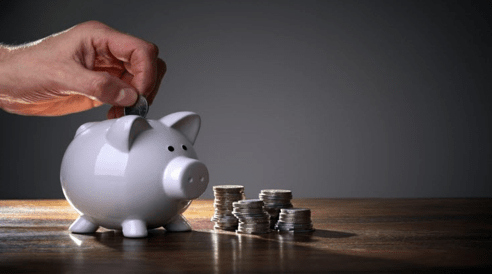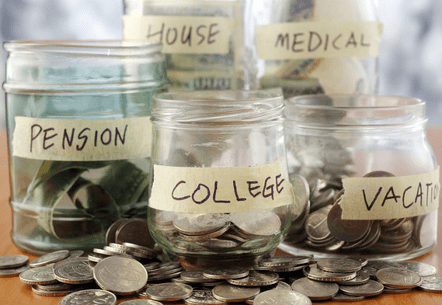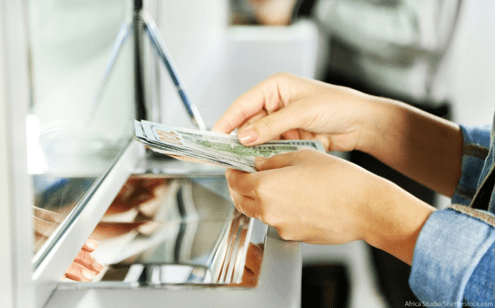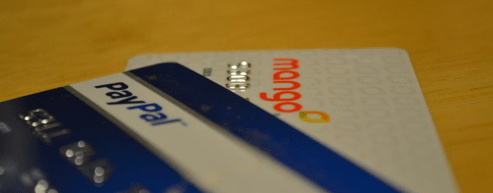2017 Guide to Finding the Best Savings Account Interest Rates
Keeping money in a savings account is one of the safest and most effective ways to ensure that your money will grow.
The best savings account rates offer competitive savings interest rates, making saving more accessible. Interest rates on savings accounts are the most effective way to expand your savings account with minimal to no effort.



Image Source: MoneysMyLife
Finding the best way to grow your money means finding the best savings account rates. Accounts that offer top savings rates are called high yield savings accounts.
The greatest way to ensure that your money can grow safely is through finding and utilizing the best savings rates, or high yield savings accounts.
Our review will act as a comprehensive guide to inform consumers on how they can advance their savings through exceptional savings interest rates. Before listing the top 6 ways to find the best savings account rates, this review will provide an in-depth analysis of the most common questions about interest rates on savings:
- Why is it difficult to find high savings interest rates?
- What is the difference between an average and an exceptional saving account interest rate?
Although finding higher savings account rates may take a little extra work, it is entirely possible for each and every consumer to find the best savings rates for their personal banking needs.
See Also: Bankruptcy Cost This Year | How Much Does It Cost to File Bankruptcy?
Why Is It Difficult to Find High Savings Interest Rates?



Image Source: GOBankingRates
In recent years, finding high savings interest rates has become increasingly difficult. This is because savings rates are largely influenced by the national economy.
Interest rates on savings from savings accounts, CDs, and bonds are closely tied to economical health. Understanding the current best savings account rates means looking back nearly a decade to the financial crisis of 2008.
Home mortgage rates played a large role in determining how banks managed savings interest rates before the crash in 2008. With the increased popularity of home loans, mortgage rates were typically between 7–8%. In order to distribute those loans, banks needed to increase available finances through savings amounts. As a result, the typical saving account interest rate was around 4%.
In the wake of the 2008 crisis, lending rates plummeted, and the typical saving account interest rate decreased to ensure that banks could continue to make a profit. This is because banks need to lend out money at a higher rate than the yield on savings accounts. Without a marked difference between savings interest rates and lending rates, banks lose money.
While lowered interest rates work well for those looking for auto loans, home loans or credit cards, they negatively affect interest rates on savings. The best savings rates are higher, generating a bigger yield.
Recovering from the 2008 financial crisis has taken its toll, pushing savings account rates lower. With a struggling economy, higher savings interest rates could substantially impede the ability of the federal government to pay interest on its own debts. Economic conditions can negatively affect the ability to save money through savings account rates.
Part of answering why finding the best savings account rates is so difficult requires an understanding of how the Federal Reserve manages and regulates savings interest rates.
Don’t Miss: Average Income Tax Preparation Fees | Full Details on Tax Service Fees
The Role of the Federal Reserve in Savings Account Rates
As the central bank of the United States, the Federal Reserve was established in order to provide standards of stability, flexibility, and safety for national banking. One of their most important jobs is to regulate and monitor banking practices, which certainly involves savings account rates.
The Federal Reserve impacts savings account rates through two means: the Federal Discount Rate and the Federal Funds Rate. The Federal Discount Rate determines loan rates between banks and the Federal Reserve. Similarly, the Federal Funds Rate determines the interest rate of loans between banks. This helps maintain stability of financial instutions.
With a weakened economy, the Federal Reserve keeps savings rates low to prevent inflation. Lower rates make it easier for banks to distribute and borrow money, which stimulates the economy. The theory is that once the national economy improves, savings interest rates will also improve.
When the national economy is flourishing, investors tend to look back to additional options for investing, like the stock market. To encourage consumers to keep their money in savings accounts, banks are more likely to raise saving interest rates. The best savings account rates come from a strong national economy.
With current savings interest rates getting comparatively lower, finding the best savings account ratesis increasingly important. Despite regulation from the Federal Reserve, there are still opportunities to find competitive savings account rates.
All-in-One Change Management Tools
Top Rated Toolkit for Change Managers.
Get Your Change Management Tool Today...
What Is the Difference Between an Average and an Exceptional Saving Account Interest Rate?



Image Source: Market Watch
In 2016, the FDIC reported that the average interest rate on savings accounts was 0.06%. In fact, many national banks offer even lower savings interest rates, with most of the best savings rates coming in as low as 0.01%.
For those who are hoping to turn their savings investments into funds for retirement or financial stability, these lowered percentages can be discouraging. In fact, many of these savings account rates are barely better than zero.
Although 0.06% may be the average saving account interest rate, the best accounts will offer much more competitive and financially beneficial rates. The difference between average and exceptional savings interest rates can be marginal, but, over time, they can produce much greater yields.
While most banks will offer less than 1% on their savings rates, the best savings account rates will range between 1–4%. This is a drastic improvement from the typical saving account interest rate. Though these higher rates may be less common, these best savings account rates are readily available to any banking consumer.
Finding the best interest rates on savings accounts means knowing exactly where and how to begin looking.
Related: Accountant Fees for Small Businesses | Average Bookkeeping Services Fees
The Top 6 Ways to Find the Best Savings Interest Rates



Image Source: GOBankingRates
By outlining 6 expert methods to find the best savings rates, our review will provide a comprehensive guide for any consumer looking to increase his or her interest rates on savings.
Finding the best interest rates on savings can be as straightforward as simply knowing where to look.
From non-traditional, online savings account rates to traditional, brick-and-mortar banking, these tips will provide direction when looking for the best savings account rates available.
1. Check Online Savings Account Rates First
Without a doubt, this is the first step that any consumer should take towards finding the best interest rates on savings accounts. Online savings account rates are well-known for being higher than that of traditional brick-and-mortar banks. Their ability to offer greater savings account rates is mainly due to their low operational costs.
Additionally, online banks typically offer less lending options, which can enable them to offer higher online savings account rates. Since online banks don’t rely upon interest gained from loans as a source of income, they tend to have the best online savings rates.
Most online banks offer savings account rates ranging from 0.75–0.95%. One popular option for top savings rates is Ally Bank, which offers savings account rates at 1%. While this may seem like a low percentage, Ally Bank offers one of the best online savings rates, at nearly sixteen times the national average.
There are a few exceptions that offer even higher savings interest rates. Through the Synchrony Bank High Yield Savings account, banking consumers can take advantage of top savings rates with annual yields of 1.05%. Over a period of 12 months, a $4,000 deposit could yield an additional $42 in a savings account.
Checking online savings account rates is a great tool in locating higher savings interest rates. Though many brick-and-mortar banks offer online services, the best online savings rates come from online banks. Banking consumers may sacrifice the ability to visit a physical location, but they can gain the best savings rates in return.



2. Look to Credit Unions for the Best Savings Rates
Though credit unions are typically known for their free checking accounts, they also have some of the best savings rates. Savings account rates are typically much higher than those of traditional banks or even online banks.
Since credit unions are independently regulated, they can often offer enhanced benefits, including the best savings rates. Banking consumers are slowly catching on to the benefits of earning top savings rates as 3.7 million people joined a credit union in 2015 – a record high.
For example, TwinStar Credit Union, located in Washington, offers savings interest rates as high as 1.61%. A Free Rewards Checking account through Consumers Credit Union yields one of the best savings account rates at 3.09%. Similarly, Great Lakes Credit Union offers highly competitive savings account rates at 3%.
When looking for the best savings account rates, credit unions are often an overlooked yet highly valuable option. Though savings interest rates may vary, credit unions typically offer top savings rates when compared to national banks. While many credit unions have nationwide accessibility, they may also have specific requirements to meet for savings interest rates.
If using online savings account rates doesn’t seem like a feasible option, credit unions are a great resource for enhanced savings account rates. Their physical location allows them to provide a traditional banking experience, with completely non-traditional savings rates.
3. Consider a Prepaid Debit Card for Top Savings Rates



Image Source: Monetary Musings
Non-traditional, prepaid debit cards have emerged as a top contender for competitive savings interest rates. Although there may be some limitations, it may be worthwhile to accept the limitations in exchange for the best savings account rates. Typical limitations include minimum balance requirements and direct deposit, though they tend to be more inclusive than traditional bank accounts’ requirements.
A good example of a prepaid debit card is the PayPal prepaid MasterCard, directly linked to a PayPal account. Its savings account is optional, but PayPal’s competitive savings account rates make it a worthwhile choice.
Balances up to $1,000 can yield a surprising 5% yield, marking one of the best savings rates available. PayPal decreases its savings interest rates after the first $1,000, but this still equates to an extra $50 each year.
Another option is the Mango prepaid debit card. Opening a savings account through Mango comes with a 6% interest yield for balances up to $5,000. The only requirement for this saving account interest rate is to deposit a combined $800 and keep at least $1 in the account at the end of each month.
Overall, prepaid debit cards manage to avoid convention through eliminating low savings account rates, providing some of the best savings rates available.
4. Ask Your Insurance Company About Its Savings Interest Rates
Within the past few years, many insurance companies have branched out to provide savings accounts. Compared to traditional banks, insurance companies offer some of the best savings rates available. Another benefit is that savings account rates are often tiered, meaning that rates increase alongside your savings.
For example, the Money Market Savings account through State Farm starts earning 0.30% interest with a balance as low as $100. Savings interest rates can increase up to 0.45%, giving State Farm a huge advantage in offering the best savings account rates.
Nationwide offers a basic savings account that reaps significant rewards. Similar to State Farm, banking consumers with Nationwide can have savings account rates of up to 0.30%. While savings interest rates are not tiered, they are still higher than most traditional banks.
5. Look at Credit Card Companies for Enhanced Savings Account Rates



Image Source: GOBankingRates
If you already have a credit card through Discover or Capital One, you may not realize that these credit card companies offer some of the best savings rates too.
For balances of $500 or more, the Discover Savings account offers 0.95%. This is more than five times the national average, giving Discover one of the best savings account rates. Additionally, Discover offers high savings interest rates with no additional charges or fees.
Capital One has provided huge amounts of value for consumers searching for the best savings account rates. Not only does the Capital One 360 Savings account offer zero maintenance fees and zero minimum balance, it also provides savings interest rates of 0.75%. While this is slightly lower than other options, the interest rates on savings is supplemented by little to no fees and easy maintenance.
As an additional benefit, Capital One banking consumers also have the option to open multiple savings accounts, making it easy to take advantage of savings account rates.









6. Find Banks That Make Saving Simple
Part of finding the best savings account rates is also finding banks that will help you utilize their interest rates on savings. Having great savings interest rates is useless without proper money management. Luckily, many banks offer automatic, free of charge savings transfers with few requirements.
The Way2Save Savings account through Wells Fargo offers banking customers the option to have automatic transfers into their savings account. Every time a bill is paid online or the card is swiped, $1 is transferred into a savings account. Additionally, a monthly transfer of $25 is sent into a savings account.
Though Wells Fargo offers extremely low savings account rates at 0.01%, automatic transfers increase the likelihood that banking consumers will use savings interest rates to their advantage.
Some banks use higher savings account rates to increase the use of additional banking programs or products. The Select Savings Account through SunTrust offers an annual 1% interest bonus for savings accounts linked to checking accounts.
Popular Article: Average Financial Advisor Costs | This Year | % of AUM, Average & Hourly
Conclusion



Image Source: The Nest
No matter what your banking goals are, finding the best savings rates can have a significant impact on your ability to save. With savings account rates dropping substantially, finding the best savings account rates is becoming a top priority for many banking consumers.
After all, the inherent attraction towards savings interest rates is that it takes little to no effort to increase dollar amounts. Savings account rates allow for the money that gets put away to grow – increasing simply by existing. Following these top 6 ways to find the best savings account rates can enhance your ability to save, significantly improving your savings account along with your personal banking experience.
Read More: How Much Do Bankers Make? – Find out Here! (Job Description, Annual Salary & How to Become a Banker)
AdvisoryHQ (AHQ) Disclaimer:
Reasonable efforts have been made by AdvisoryHQ to present accurate information, however all info is presented without warranty. Review AdvisoryHQ’s Terms for details. Also review each firm’s site for the most updated data, rates and info.
Note: Firms and products, including the one(s) reviewed above, may be AdvisoryHQ's affiliates. Click to view AdvisoryHQ's advertiser disclosures.



